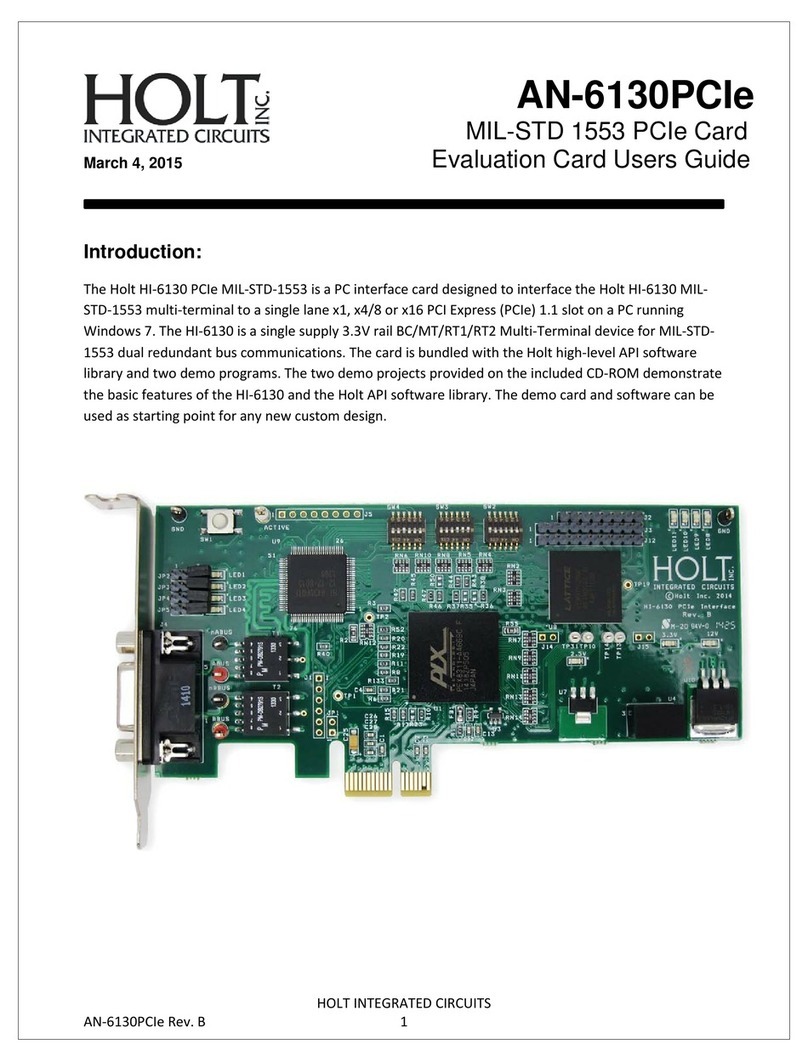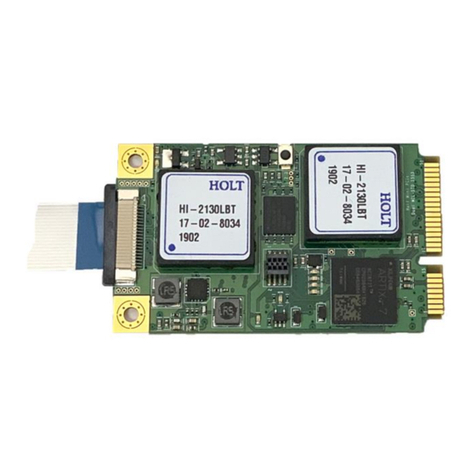Holt Integrated Circuits
9
Press '3' RT Mode Code data word reads
Press '4' Master Reset and reinitializes terminals
Press '5' Toggle Dev0 BCENA on/off
Press '6' Toggle Dev1 BCENA on/off
Press '9' Set RT addresses
Press '0' Toggle between User and Demo(default) modes
Press 'M' for menu, or press any valid menu key. >>
The menu commands are very similar to other Holt ADK’s such as the ADK-6138, ADK-6130-2 or
ADK-6131. Lower case characters ‘a’, ‘n, ‘b’, ‘c’ and ‘r’ executes commands on the (Dev0) and ‘A’,
‘N’, ‘B’, ‘C’ and ‘R’ executes commands on Dev1. With a -1F card (only one HI-2130) the upper
case commands will not be presented.
Command ‘r’ and ‘R’ is used to display system registers names and values on the screen.
Command ‘w’ displays a memory dump of device memory showing up to 256 words. This is useful
for viewing other areas of memory such as the illegalization tables, control blocks and data
buffers.
Demo exercises using Device 0
1. BC transmits 15 messages and RT1 captures and displays the traffic data.
Commands ‘n’ or ‘N’ initializes the BC to transmit 15 messages. To display RT data traffic some
additional commands must first be executed. Five sets of three repeating messages are transmitted
by the BC. SA30 is configured for data loop-back. So the data transmitted to the RT from the first
Receive command is loaded into the same buffer location the RT will reference when transmitting
data back to the BC. Just these three commands verify that both A and B buses are properly
communicating with the BC. The data word values will match the data from the first Receive
command.
BC > RT Receive Cmd, SA30, 32 words, BusA: 03-R-30-00
RT > BC Transmit Cmd, SA30, 32 words, BusB 03-T-30-00
RT > BC Transmit Cmd, SA30, 32 words, BusA 03-T-30-00
Enter ‘b’ to enable Dev0 RT1
Enter ‘k’ to enable Dev0 RT1 with SMT
Enter ‘t’ to enable RT traffic data displayed on the screen.
Enter ‘n’ to transmit 15 messages and stops.
The display should look similar to this below.
Press 'M' for menu, or press any valid menu key.
>> b
>k
RTMT Demo
>t































